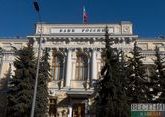First Deputy Chairman of Russia’s Central Bank Dmitry Tulin said that about three-quarters of its plan to clean up the banking system are completed.
According to Tulin, Russia’s central bank does not expect to have to bail out more major commercial banks, as it did in 2017.
Considering that in 2017, the regulator conducted a mass rehabilitation of the largest banks, the recovery process "reached a peak" in 2017 and has been declining since then.
Deputy Governor Vasily Pozdyshev, in turn, said that Russia’s central bank expects to recover within five years around 1 trillion rubles ($15.5 billion) of assets of banks it has bailed out in the past few years.
The advisor on macroeconomics to the CEO of the 'Opening-Broker' brokerage house, economist Sergey Hestanov, speaking to Vestnik Kavkaza, noted that that he worked in the banking sector in the early 1990s, when there was a start of the current problems. "The main reason for these problems was a too cheap banking license those years. This led to the fact that any large business had its own bank," the expert said.
He recalled that there have been several waves of bank bailouts since then. "We all remember the recent wave, but large-scale bailouts were also carried out in 1996, 1998 and 2004-2005. The current wave is the elimination of the mistakes made in the 1990s. The standards have become somewhat stricter after Elvira Sakhipzadovna (Nabiullina - VK) was appointed new head of the Central Bank. And practically all licenses were recalled for two reasons: insufficient capital or doubtful operations," Hestanov explained.
"The Central Bank has a clear policy of restoring order, and, apparently, two-thirds or three-quarters of its plan have already been completed. In a few years it will be completed," the advisor on macroeconomics to the CEO of the 'Opening-Broker' brokerage house added.
At the same time, the expert noted that the results of this process will have practically no impact on the banking sector as a whole, since the banks that had their licenses revoked did not actually carry out any real activity. "If the bank was engaged in cash withdrawal, then it practically did not issue loans, thus, it did not compete with those who were engaged in real banking activity," Sergey Hestanov concluded.










